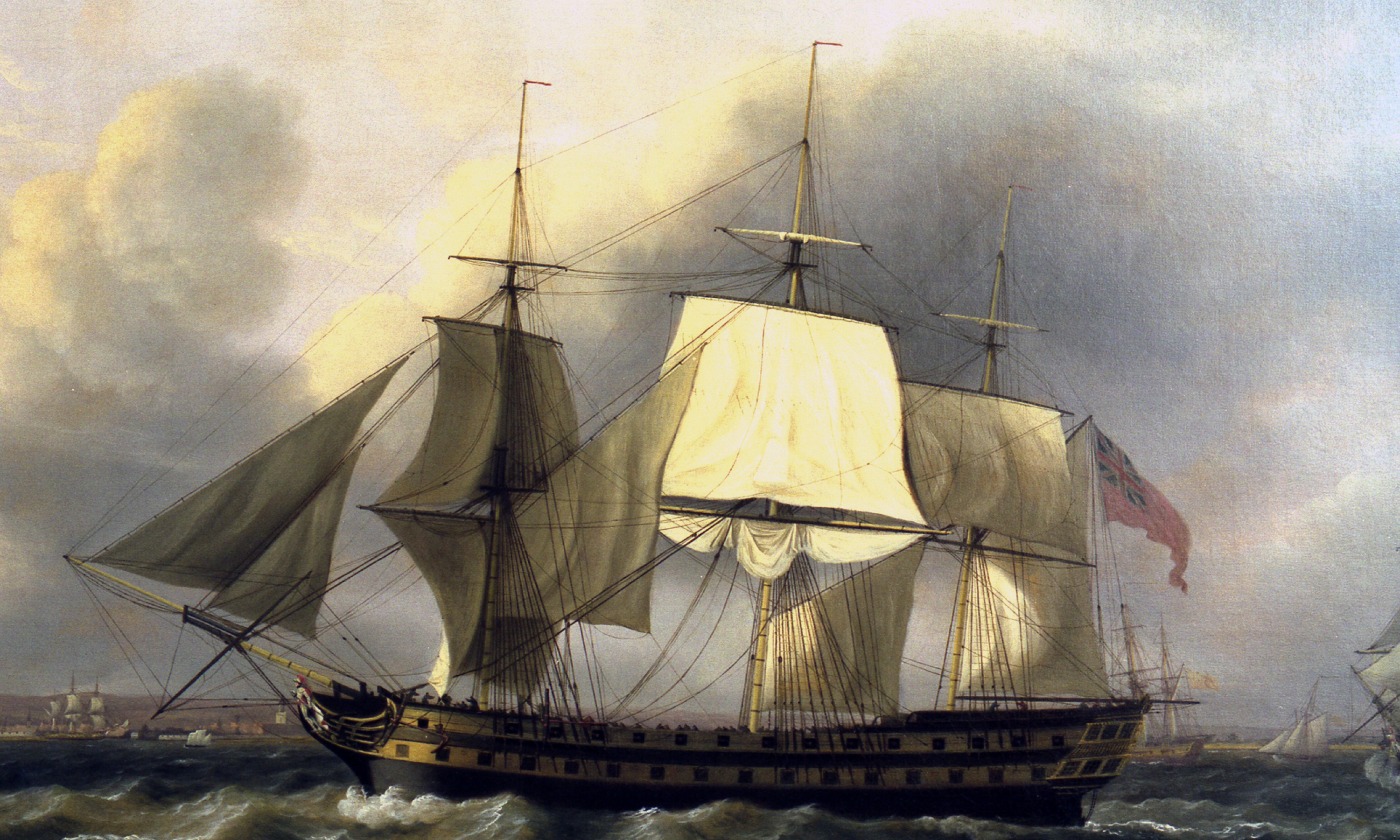The 'Earl of Abergavenny' East Indiaman, off Southsea (1801) by Thomas Luny (1759–1837) Copyright Portland Museum Trust
The wreck of a ship, the loss of which broke the heart of poet William Wordsworth, is being given official protection by the UK government today (14 August), to secure it against treasure hunters. Following advice from Historic England it becomes only the third East India wreck to be given this protection, which will allow divers to visit, but not to remove objects.
Substantial remains of the Earl of Abergavenny, once one of the largest ships in the East India company fleet, still lie where she sank off the coast of Weymouth in 1805. The wreck ended the lives of 250 passengers and crew, including the ship’s captain, John Wordsworth, younger brother of the poet.
“This wreck has an evocative story to tell about the life and sorrow of one of our most renowned poets, William Wordsworth,” says Duncan Wilson, chief executive of Historic England. “But it also has an important place in this country’s shared maritime history and how the East India Company’s fleet made its impact across so much of the world.”
John Wordsworth had lived with William and their sister Dorothy at their most famous home, Dove Cottage at Grasmere, and like his siblings loved walking in the Lake District landscape. He was described by William as having a poet’s eye.
Critics have detected a darkening in the tone of William’s poetry and a much bleaker view of nature after the family learned of the disaster, which befell John’s fifth voyage as captain. He had already completed two voyages for the East India company on the Earl of Abergavenny, but on 5 February 1805 the ship set sail late into a stormy night, and ran aground on the Shambles sandbank.
A relative, Joseph Wordsworth, was also in the crew, but was one of the few who survived the wreck. Hundreds of lives were lost almost within sight of Weymouth harbour.
Large parts of the ship still lie under 16 metres of water, half buried in sand on the seabed. This includes planking, timber frames and iron knees—brackets that make the ship, built in 1796 at Northfleet in Kent, of interest to naval historians as an early example of changing naval technology combining iron and timber.
A cufflink assumed to have belonged to Captain John Wordsworth, recovered from the Earl of Abergavenny shipwreck
Copyright Portland Museum Trust
Salvage work using early diving equipment began immediately after the wreck to retrieve its most valuable cargo: 62 chests of silver dollars then valued at £70,000, and estimated at £7.5m today. The wreck was partially excavated in the 1980s with many artefacts recovered, including a gold cufflink believed to have belonged to John.
Finds, including the cufflink, are on display in Dorset’s Portland Museum, where they are currently being recorded as 3D digital models by volunteers under the Heritage Lottery funded Diving into the Digital Archives of the Earl of Abergavenny project.
Chloe Taylor, the coordinator of the Portland Museum project, says that the digitising work was helping to tell and share the tale of the Earl of Abergavenny. “The waters that surround the Isle of Portland are renowned for being treacherous,” she explains. “Many ships have fallen victim to the unrelenting waves, frozen in time with their stories untold.”

